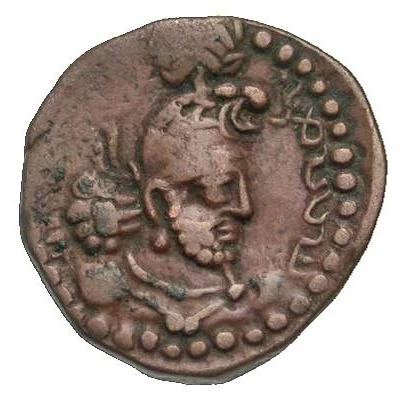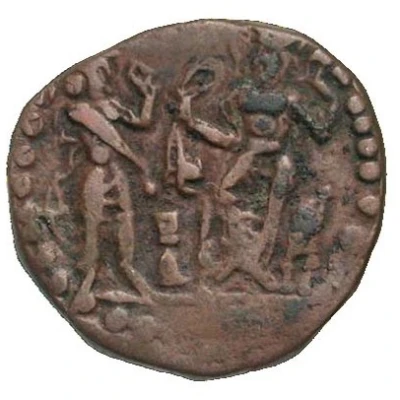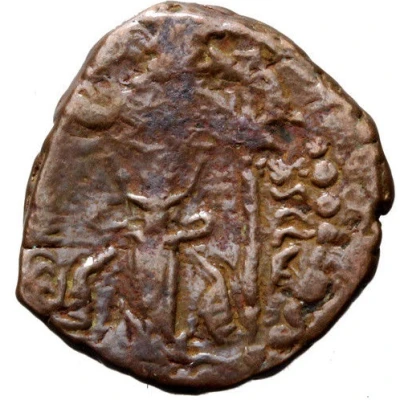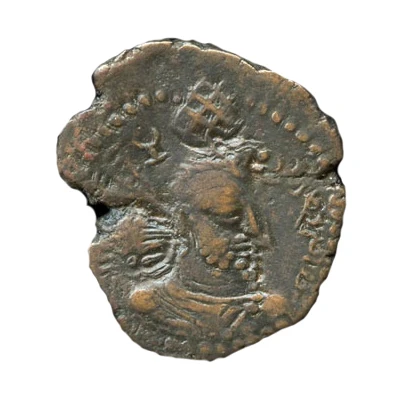


Chalkon - Hormizd I
| Billon | 2.20 g | 15 mm |
| Issuer | Indo-Sasanian Kingdom (Sasanian Empire (224-651)) |
|---|---|
| Shah | Hormizd I (265-295) |
| Type | Standard circulation coin |
| Years | 256-264 |
| Value | Chalkon (1⁄576) |
| Currency | Drachm (230 AD-360 AD) |
| Composition | Billon |
| Weight | 2.20 g |
| Diameter | 15 mm |
| Shape | Round (irregular) |
| Technique | Hammered |
| Orientation | Variable alignment ↺ |
| Demonetized | Yes |
| Updated | 2024-10-10 |
| Numista | N#82325 |
|---|---|
| Rarity index | 100% |
Reverse
Same king standing in adoration before Buddha on throne.
King in Sasanian loose garment, with sword at left and dagger at right; right hand pointing towards small fire-altar in shape of hour-glass; left hand raised in adoration.
God on throne, head and body in profile, knees parted, upper part of body shemms naked; long sceptre in left, rigth hand on arm-rest of throne.
Throne seen partly in profile; according to Hellenistic prospective.
Comment
Characteristics of Billon Chalkons:
• Material: Billon (copper-silver alloy, with a silver content of 10-20%)
• Weight: Around 2-4 grams
• Diameter: Around 15-20 mm
• Design: Similar to copper Chalkons, with the king's bust on the obverse and deities or symbols on the reverse
• Inscriptions: Inclusion of inscriptions in Bactrian or Pahlavi script.
Some examples of Billon Chalkons from the Kushano-Sassanian Empire can be found in numismatic collections and museums, such as:
• The British Museum
• The National Museum of Afghanistan
• The National Museum of Pakistan
Interesting fact
One interesting fact about this coin is that it features an image of King Hormizd I on one side and a fire altar on the other, which was a common motif in Sasanian coinage. The fire altar symbolized the Zoroastrian religion, which was the dominant religion of the Sasanian Empire. This coin was minted during a time of great cultural and religious exchange between the Indo-Sasanian Kingdom and the Sasanian Empire, and it reflects the blending of Persian and Indian influences in the art and religion of the region.



